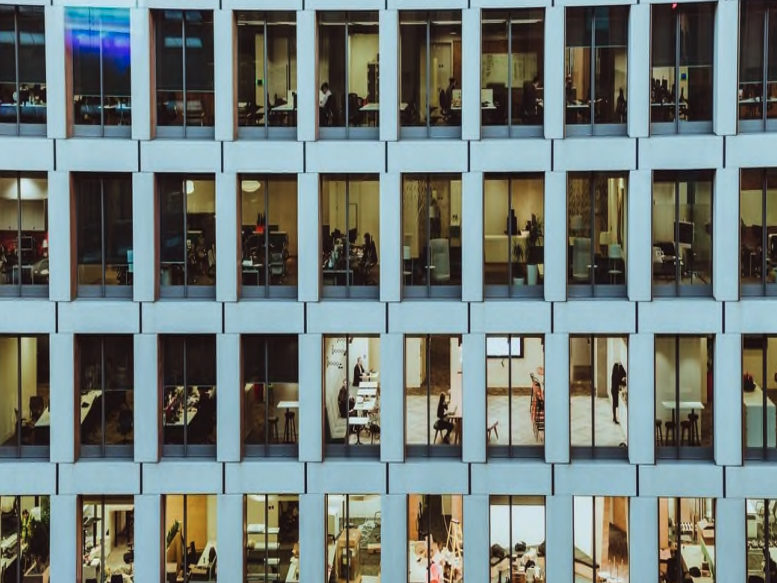According to what we now know, coronavirus spreads via droplets excreted when we cough, sneeze etc. and can then spread in indoor air. The risk of infection is lowest out of doors. How do our office buildings have to change to keep the risk of infection low in the workplace? Ingenieurbüro Liebert Versorgungstechnik (https://www.liebert-ing.de/) has offices in Hüfingen, Berlin and Hamburg and specialises in combining ecology, economy and human needs in the planning of buildings. Founder Thomas Liebert is involved in the initiative ‘#beyondcrisis – Time for new solutions (http://www.beyond-crisis.de)’ and reports in a guest article on new requirements in workplace environments and how building technology can already satisfy them today.
The risk of getting infected with coronavirus is greater in enclosed spaces. The aim therefore has to be to provide as natural a room climate as possible at the workplace to prevent viruses from spreading. This is not altogether compatible with the current trend of planning open space office buildings with shared desks and ever greater workplace density. The need to guarantee a controlled climate in working environments is emerging as a key challenge in the planning of building technology. This is a challenge which our industry must, and indeed can, meet.
Using windows alone to ventilate is not enough to control indoor climates, since it causes draughts – especially in open plan and combined offices – and these draughts tend to spread the moisture droplets which people produce. What’s more, windows alone don’t allow you to keep humidity levels within healthy limits in winter.
It isn’t just room temperature and supplying fresh air without draughts that help prevent the spread of viruses indoors. Special attention has to be paid to room humidification. Air humidification is often set aside in planning projects for energy reasons, which is regrettable. In winter this can mean that relative air humidity indoors can drop to as low as 15%, which can dry out mucous membranes in the nose, eyes and throat, thus exponentially increasing the risk of infection, according to medical studies. Medical science recommends between 40 and 55 percent relative humidity as a balanced level.
Another important factor when we think about maintaining social distancing rules is density of occupation and workplace flexibility. These considerations are bound to come up more and more from now on. DIN EN15251 recommends ten square metres of office space per workstation, which is easily enough to comply with social distancing rules.
So, moving forward, we will have to say goodbye to crowded working environments, window ventilation and cooling and heating via recirculation units.
As planners of innovative building technology, we’ve always recommended a top notch hygienic ventilation system as a base level of equipment. Such a system is designed to replace all of the air in an office with outside air – in a carefully controlled process – two and a half times each hour to achieve minimum hygiene levels.
This outside air is heated or cooled – and humidified in winter. This guarantees a controlled indoor climate in terms of air replacement. Ideally, air is introduced through draught-free displacement diffusers. This results in low air velocities in the room and produces a very comfortable climate for everyone working there.
Other than that, cooling and heating is achieved using “silent” heating and cooling surfaces which operate more by radiation and less by convection and are positioned in the ceilings and floors – rather than recirculation units or convectors, which cause unwanted air currents.
Modern building technology therefore already has solutions that create workplace conditions not overly conducive to infection.
Author: Thomas Liebert, founder and managing director



